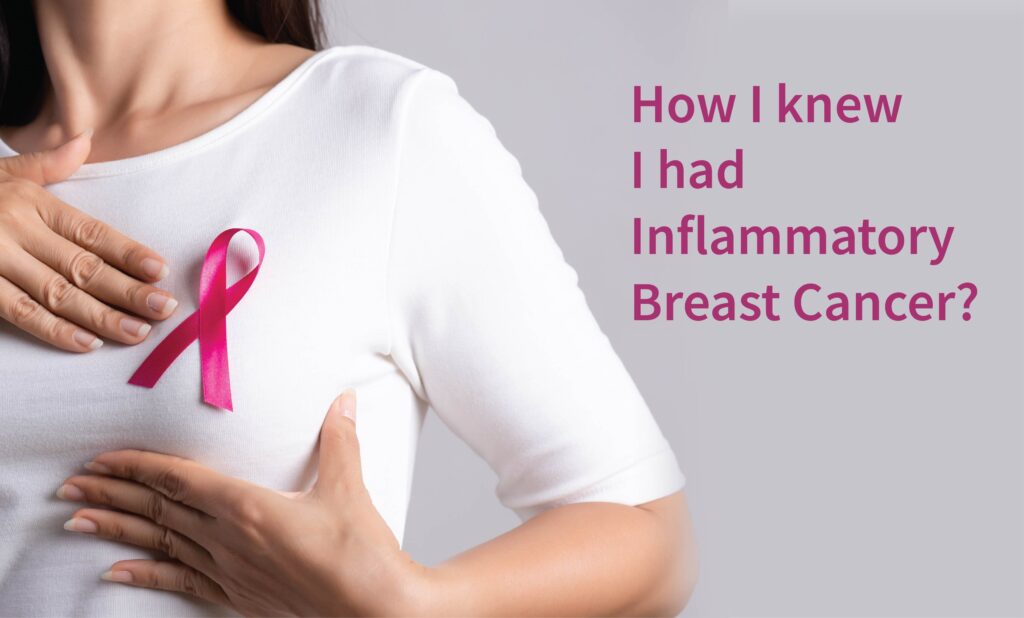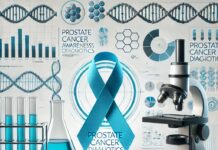How I Knew I Had Inflammatory Breast Cancer
Inflammatory breast cancer (IBC) is a rare, aggressive form of breast cancer that presents differently from more common breast cancers. Unlike traditional breast cancers, which often develop as a lump, IBC shows signs like rapid swelling, redness, and skin thickening, often leading to misdiagnosis as an infection. I knew I had IBC when I noticed these symptoms and sought medical attention after they persisted and worsened, despite initial treatment for an infection. Recognizing and acting on these signs led to an accurate diagnosis. Read about Breast Cancer Vaccine: A Promising Future in Cancer Prevention
Recognizing Symptoms of Inflammatory Breast Cancer

Sudden Breast Swelling and Redness
One of the first signs of IBC is rapid swelling and redness in the breast, which can appear over the course of days or weeks. In my case, I noticed that my breast began to feel heavy, and the skin turned red as if it were inflamed.
Skin Thickening (Peau d’Orange)
A noticeable change in skin texture resembling an orange peel, called peau d’orange, is another classic symptom. My breast skin began to thicken, and I noticed tiny dimples forming, which was one of the most alarming signs that something was wrong.
Persistent Pain and Warmth
While some breast cancers are painless, IBC often causes pain and warmth in the affected breast. Initially, I thought it was a typical infection or irritation, but the pain persisted, and warmth didn’t subside, prompting me to see a doctor. Discover more How to Treat Breast Cancer with Hyperthermia in Dogs
Nipple Changes
I experienced nipple inversion, where the nipple started to turn inward. In combination with the swelling, I also noticed some minor discharge, both of which indicated that the situation was more serious than a typical infection.
Lymph Node Involvement
Swelling of the lymph nodes in my armpit and near my collarbone was another clear indicator. This swelling suggested that the cancer had potentially spread, which was confirmed during my diagnostic tests.
Diagnosis and Misdiagnosis Journey
Initial Misdiagnosis as Mastitis
Many people with IBC are initially misdiagnosed with conditions like mastitis, a breast infection. When my symptoms first appeared, I was treated with antibiotics, but the condition worsened instead of improving, which is common in IBC cases.
Biopsy and Imaging
After the initial treatment failed, I underwent imaging tests (mammogram and ultrasound) and eventually a biopsy. Since IBC doesn’t always present as a lump, the biopsy helped confirm the diagnosis by analyzing tissue samples from my breast and lymph nodes.
Treatment and Recovery
Chemotherapy
Given the aggressive nature of IBC, chemotherapy was the first step in my treatment to shrink the cancerous cells before surgery. It’s essential for controlling the spread of this fast-growing cancer.
Mastectomy and Lymph Node Removal
After chemotherapy, I had a mastectomy to remove the affected breast and some of the lymph nodes. Surgery is a critical step to ensure that the cancer is fully removed.
Radiation and Hormone Therapy
Following surgery, I underwent radiation therapy to destroy any remaining cancer cells in the breast tissue and nearby lymph nodes. Because my cancer was hormone receptor-positive, hormone therapy was also part of my treatment plan.
Conclusion
Recognizing the symptoms of IBC is crucial because the cancer develops quickly and behaves differently than other breast cancers. Symptoms like skin thickening, rapid swelling, redness, and pain are often mistaken for infections. If you notice these signs, especially if they persist despite treatment, seeking a second opinion and pushing for further testing is critical.
IBC often involves lymph node swelling, which can indicate that the cancer has spread. This progression makes it even more urgent to pursue a comprehensive diagnosis, including imaging tests and a biopsy.
By knowing what to look for and acting quickly, you can improve your chances of catching inflammatory breast cancer early and starting treatment before it advances further. Early detection and aggressive treatment are the best ways to manage this rare but serious form of breast cancer.
FAQs About Inflammatory Breast Cancer
1. What are the early signs of inflammatory breast cancer?
Early signs of IBC include rapid swelling, redness, skin thickening, and nipple changes. Unlike other breast cancers, IBC typically doesn’t cause a lump, making these symptoms crucial for early detection.
2. How is inflammatory breast cancer diagnosed?
IBC is diagnosed through biopsies, mammograms, and ultrasounds, although its lack of a distinct lump can make it difficult to detect. Tissue samples are crucial for confirming the diagnosis.
3. Can inflammatory breast cancer be misdiagnosed?
Yes, IBC is often misdiagnosed as mastitis or other infections because of its symptoms. If symptoms persist after treatment, it’s important to request additional tests.
4. How fast does inflammatory breast cancer progress?
IBC progresses rapidly, often within weeks. The cancer can spread quickly to other parts of the body, so early detection and treatment are crucial.
5. What treatments are available for inflammatory breast cancer?
Treatment usually involves a combination of chemotherapy, surgery, radiation, and hormone therapy. Due to its aggressiveness, IBC often requires a multi-step treatment plan.








